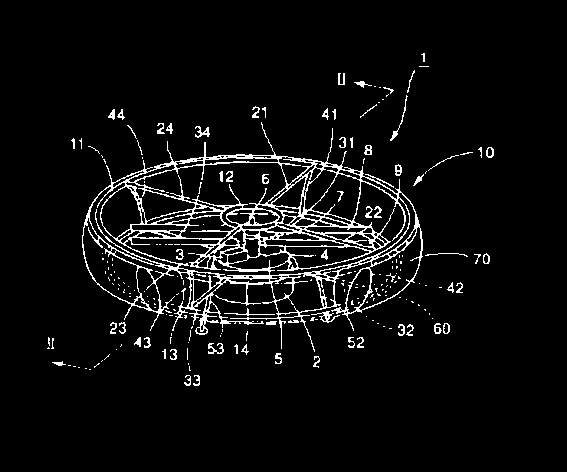 fig 1 |
How it all began:
Just like many other ideas, the GEN H-4 began as a scribble on just another piece of paper. Gennai Yanagisawa, better known as eGenf was thinking of ways to use the engine, his engine. Several years ago while being employed at Zenoa, Gen had engineered several engines. Using two cylinders from his past experience, he had made a 125cc boxer engine. It had been in development for over 5 years. The engine was light, powerful and reliable, but its price put it beyond usual uses.
eA light powerful engine has been wanted by the aircraft community for a long time, but where to start?f As a 10hp engine by itself can only propel the lightest aircraft, Gen, being the CEO of an engineering firm, designed an engine unit with an extension shaft for maybe an hangglider. It was tested by a well known hangglider pilot in Japan with outstanding results. But it was too early, hanggliding itself was not popular enough to generate interest in the engine unit at the time.
 fig 1 |
The platform was stable and powerful enough for its intended use. As the next development step, a radio controlled unit was completed. Roll and pitch was controlled by tilting the rotors themselves and yaw was controlled by vanes. Looking back the answer is evident, but in 1987, after several flight attempts and crashes, and lots of head scratching, lack of feedback from the unit became a limiting factor in the development. The engineering teamfs spirits were down, unable to find a remedy. eThe simplest answer is the best answerf Gen decides to make a man-carrying unit.
fig2 |
Increasing the payload to 65kg by using two engines, the prototype was completed in 1992 but did not produce enough lift to produce the desired result. After several testing sessions, the Boyfs Dream Helicopter or BDH-1 (fig2) was exhibited at the 1994AERO-SPACE show in Japan. The concept of a compact co-axial counter-rotating one man helicoper was highly praised and attracted worldwide attention.
To overcome the shortcomings of the first prototype, a three engined version(30hp) was made in 1996. The test pilot, Katsumi Terada, the first Japanese post-war private helicopter pilot, claimed that the BDH-2 (fig3) was easier to fly than any production helicopter he had ever flown. After extensive testing, designing, and re-designing, with new rotors, improved engine performance and a newly designed frame the BDH-3 was ready.
fig3 |
Although the BDH-3 flew well on 3 engines, the unit was not able to hover on 2. To compensate for loss of one engine the BDH-4 evolved after a total re-design. The 4 engines were located radially around the gearcase making each engine easy to maintain and service. By locating the engine above the gimbal assembly, the long, heavy driveshaft and universal joint was no longer needed, simplifying the design and making the total weight lighter.
This BDH-4 was exhibited at Air Venture 1997drawing attention to the future possibilities of such helicopters. This unit used small electric motors turning propellers to control the yaw, which was marginal in its performance. In 1998 a new system for yaw control utilizing an electric motor to differentiate the rotor rpm was completed. Now the yaw could be controlled easily by the pilotfs left thumb.
The BDH-4 was re-named GEN-H-4 and flew before spectators at Air-Venture 98 ,99and2000. Further development is being continued by the staff in Matsumoto, JAPAN.